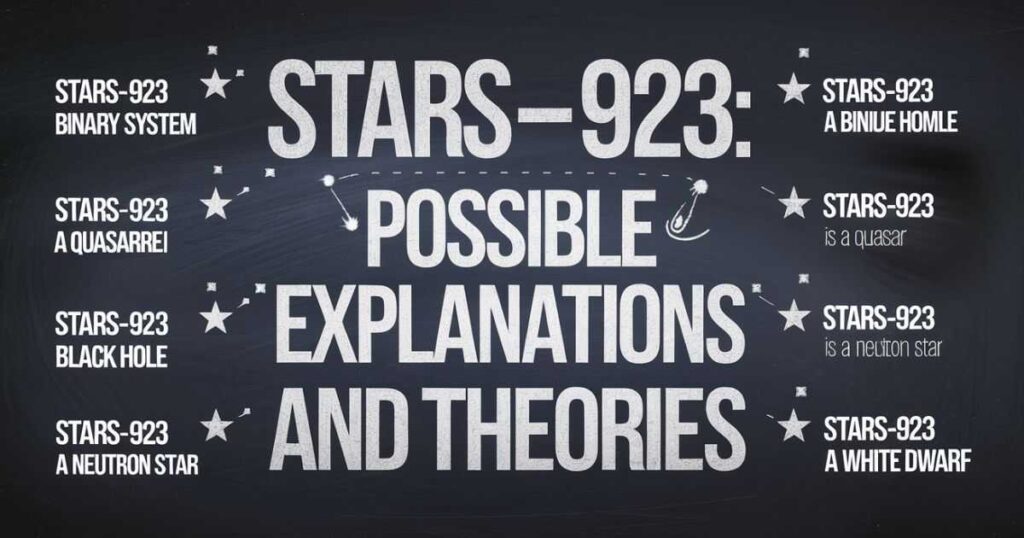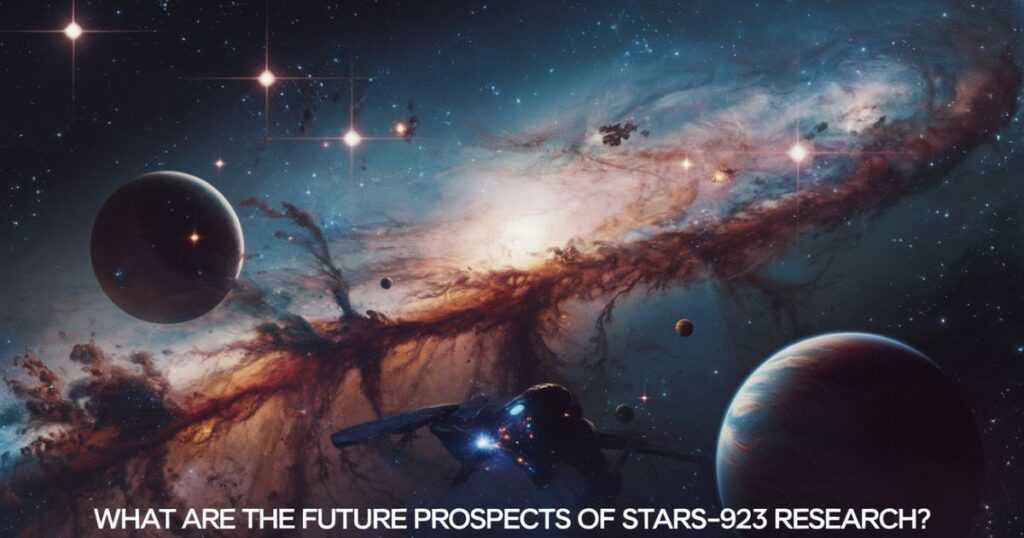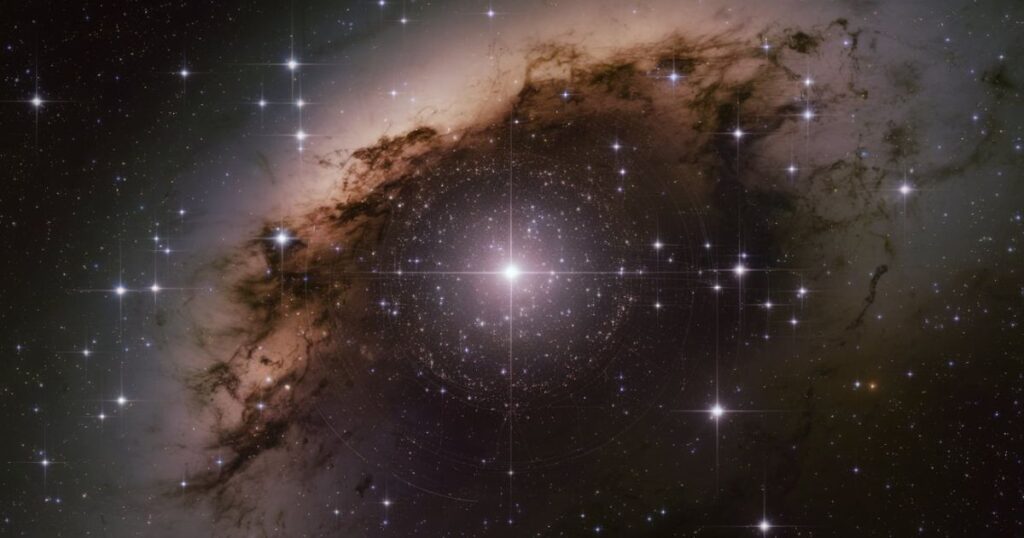Stars-923 is a recently discovered celestial object that has astronomers buzzing with excitement. This mysterious stellar body defies conventional classification, exhibiting unique properties that challenge our understanding of star formation and evolution.
Stars-923 isn’t your average twinkling dot in the sky. It’s a puzzling phenomenon that’s challenging everything we thought we knew about stellar evolution.
From its discovery to its potential impact on our understanding of the universe, this article will take you on a journey through the cosmos, exploring the mysteries of this fascinating space phenomenon.
Discovery and Initial Observations
It all started on a chilly night in late 2023. A team of eagle-eyed astronomers, armed with cutting-edge space-based telescopes, stumbled upon something extraordinary.
Using advanced astronomical techniques, they spotted a peculiar object that didn’t quite fit any known categories. This cosmic discovery sent ripples through the scientific community. The initial observations of it left researchers scratching their heads.
Its unique properties set it apart from anything they’d seen before. The team quickly realized they were dealing with an intriguing celestial body that could potentially rewrite the books on stellar characteristics. As news spread, observatories around the world turned their attention to this new cosmic kid on the block.
Recomended Blog: Is Digital Art Ankinsart Professional Tool or Concept?
Physical Characteristics
Stars-923 is like that one friend who always stands out in a crowd. Its spectral signature is as complex as a cosmic jigsaw puzzle. Unlike most stars that have predictable light patterns, it boasts a complex spectrum that changes faster than a chameleon in a rainbow. But that’s not all.
The star mass of Stars-923 is off the charts. Imagine a heavyweight champion in a sea of featherweights – that’s it for you. Yet, despite its massive size, it’s surprisingly cool. This combo of high mass and low temp is rarer than a quiet moment in New York City.
Scientists think Stars-923 might be surrounded by a circumstellar environment that’s bustling with activity, possibly including a dense disk of cosmic dust and gas.
| Characteristic | Description |
| Spectral Signature | Highly complex and variable |
| Mass | Several times that of the Sun |
| Temperature | Unusually cool for its size |
| Environment | Possibly surrounded by dense disk |
Possible Explanations and Theories

Some think it might be a baby star, still in its diapers. This young star could be in the midst of the star formation process, gobbling up matter from its surrounding nebula like a cosmic Pac-Man.
On the flip side, others reckon Stars-923 might be on its last legs. They suggest it could be in the final stages of life, getting ready to go out with a bang as a supernova.
The weird spectrum could be the result of some funky astrophysical processes happening in its outer layers. But here’s the kicker – it’s not showing other typical signs of a star about to go boom. Talk about an astronomical head-scratcher.
Significance in Astronomy
Stars-923 is shaking up the astronomy world like a galactic earthquake. It’s challenging our current astronomical models and could lead to some major rewrites in the stellar evolution textbooks.
If it is indeed a newborn star, it could give us front-row seats to the early stellar stage, helping us understand how stars form. On the other hand, if it’s a dying star, we might get to witness some never-before-seen astrophysical phenomena.
Either way, Stars-923 is proving to be of immense importance in astrophysics, potentially unlocking new cosmic implications and astronomical insights.
What Are Stars-923? Do they have Specific Qualities?
Alright, let’s break it down. Stars-923 isn’t the name of a single star, but rather a classification of a group of stars with some seriously unique quirks. Think of it like a cosmic clique – these stars hang out together because they share some pretty special traits.
The celestial identification of it helps astronomers keep track of these oddballs in the vast sea of stars. Their specific qualities include that wild spectral signature we talked about earlier, their massive size coupled with cool temps, and their potential for being surrounded by a busy stellar environment.
These traits make Stars-923 stand out in the crowd of star cataloging, giving observational astronomy a run for its money.
Read Also This Blog: Goldengatemax.shop: Your One-Stop Shop for Premium Deals and Steals
How Are The Stars-923 Formed? A step-by-step Process
Buckle up, space cadets! We’re about to take a journey through the life of a Stars-923, from cosmic dust to stellar superstar. Here’s the lowdown on how these cosmic enigmas might come to be:
- Molecular cloud stage: It all starts with a giant cloud of gas and dust, chilling in space.
- Protostar phase: Gravity does its thing, pulling the cloud together to form a baby star.
- T-Tauri phase: The young star throws cosmic tantrums, spewing out material as it settles down.
- Main sequence: The star reaches adulthood, burning hydrogen like there’s no tomorrow.
- Red giant phase: As it ages, the star puffs up like a cosmic balloon.
- Fusion of heavier elements: The star starts cooking up heavier elements in its core.
- Supernova and planetary nebulae: The grand finale! The star might go out with a bang or a beautiful cosmic light show.
What Are The Future Prospects of Stars-923 Research?

Hold onto your space helmets, folks! The future of Stars-923 research is brighter than a supernova. With upcoming technological advancements in astronomy, we’re talking about potential breakthroughs that could blow our cosmic minds.
Scientists are chomping at the bit to get their hands on new toys like the James Webb Space Telescope and other souped-up observatories. These bad boys will let us peek at it in ways we never could before.
We’re talking about unraveling the mysteries of their stellar properties, understanding their role in cosmic evolution, and maybe even figuring out if they’ve got any planetary buddies hanging around.
What are the secrets of observing Stars-923 from the Earth?
Want to catch a glimpse of Stars-923 yourself? Well, it’s not as easy as spotting the Big Dipper, but it’s not impossible either. Here are some tips for all you aspiring stargazers:
- Equipment: You’ll need more than just your peepers. A good telescope is a must.
- Location: Find a spot away from city lights. The darker, the better!
- Timing: Check astronomical calendars for the best viewing times.
- Patience: Stars-923 can be elusive. Don’t get discouraged if you don’t spot it right away.
- Apps: Use stargazing apps to help you navigate the night sky.
FAQs
What is stars-923? What makes them interesting?
Stars-923 is a classification of stars that break the mold of what we typically expect from stellar objects. They’re interesting because they challenge our understanding of stellar lifecycles and could potentially lead to new discoveries about how the universe works.
Is it easy to observe stars-923?
Not gonna lie, it’s pretty tricky. Stars-923 requires some serious astronomical equipment and know-how. But don’t let that stop you! With the right tools and a bit of patience, even amateur astronomers can join the hunt.
What are some of the unique features of stars-923?
The standout features of Stars-923 include their complex and variable spectral signature, their massive size coupled with cool temperatures, and their potential for being surrounded by an active circumstellar disk.
Why is stars-923 important to astronomers?
Stars-923 is a gold mine for astrophysical studies. They could help us understand everything from star formation to the late stages of stellar life. Plus, they might even give us clues about how planets form!
Do the stars-923 revolve around planets?
We’re not sure yet! There’s a possibility that Stars-923 could have planetary systems, but we need more research to confirm this. It’s one of the many exciting questions astronomers are trying to answer.
Conclusion
Stars-923 is more than just a twinkle in the night sky – it’s a window into the complex and fascinating world of stellar dynamics. From challenging our understanding of star formation to potentially revolutionizing our knowledge of the cosmos, these celestial oddballs are keeping astronomers on their toes.
As we continue to study Stars-923, who knows what we might discover? Maybe we’ll unravel the mysteries of stellar evolution, or perhaps we’ll stumble upon something entirely new and mind-blowing. One thing’s for sure – the story of Stars-923 is far from over.

